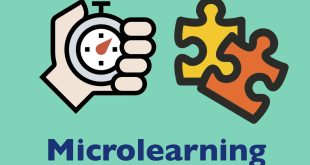What is meant by Bloom’s Taxonomy? Why should I use it as a teacher? To what extent is it effective in the classroom? What is the importance of Bloom’s Taxonomy? Will it benefit my students?
By the end of this article, you will have gained detailed and satisfactory answers to all these questions. After learning about Bloom’s taxonomy, you will realize that perhaps you have been unknowingly using it throughout your teaching career. Surely though, this article will help you rethink your teaching strategies, update your assessment methods, and ultimately improve your student’s performance in the classroom.
Get started Skolera for FREE
Table of Contents
What is Bloom’s Taxonomy?
Bloom’s Taxonomy is a hierarchical classification that prioritizes certain cognitive learning skills according to their levels of difficulty. These skills are distributed among three domains that are supposedly required for learning: the cognitive, the affective, and the psychomotor domains.
The cognitive domain has been the centre of attention of Bloom’s taxonomy and will be the crux of this article. It is mainly concerned with the building of intellectual skills in a pyramid-like manner. The affective domain holds the emotional aspect of the individual and the process of its growth, while the psychomotor domain is responsible for the physical skills and the development of motor skills like speed and precision.
When it comes to the cognitive domain, Benjamin Bloom and his team of cognitive psychologists proposed a set of six skills needed for learning: remembering, understanding, applying, analysing, evaluating, and creating. These exist in the revised taxonomy which is an update and improvement on the original one.
These skills are a prerequisite to one another, which means that students should acquire the skills in a pyramid-like manner. They go from basic skills to more advanced ones that are quite crucial for learning. The team’s ultimate goal was to design a framework for teachers, educators, and curriculum coordinators to enable them to understand the cognitive process of learning for students: how students learn, acquire skills, and develop an understanding of a subject.
The following video is an interesting visualization of Bloom’s classification. It also tackles the immense importance of Bloom’s Taxonomy.
Purpose of Bloom’s Taxonomy
Originally, the taxonomy was created to provide a base for teachers’ assessment methods especially at the college level. Nowadays, though, Bloom’s Taxonomy takes a deep effect on the educational process in K-12 institutions. Teachers rely on the taxonomy not only in the evaluative part of teaching but in setting clear learning objectives, improving classroom teaching strategies, and creating solid, comprehensive curricula as well.
Bloom’s taxonomy also helps teachers and curriculum coordinators enhance quizzes, assignments, and projects according to the pyramid of learning for students. What is especially impressive about Bloom’s Taxonomy is how flexible and practical it is in application to different topics. Teachers and educators can apply this taxonomy to teaching the respiratory system, trigonometry, or even 20th-century literature.
This article discusses the best strategies to maximize student achievement.
Six Levels of Bloom’s Taxonomy
“Creativity follows mastery, so mastery of skills is the first priority for young talent.” This quotation by Benjamin Bloom reflects on how the learning process is usually built on a solid base. For example, it is difficult for a person to master writing an argumentative article without learning the definition and purpose of conducting arguments.
As indicated below, the 2001 revised Taxonomy placed 6 verbs to describe the learning process of students. This classification indeed helps teachers understand the cognitive process that takes place when a student learns something new. Each level is accompanied by a detailed example to show you how the application of Bloom’s Taxonomy is carried out in the teaching of a certain subject.
- Remember
This verb comes as the lowest level of Bloom’s Taxonomy. The student shows a basic understanding by being able to recall the primary facts about a specific topic. An example of this would be to remember the definition of photosynthesis and memorize the chemical equation that represents the process itself.
- Understand
This stage comes right after the memorization of a subject and it indicates the student’s ability to describe and explain the fact that he/she remembered. Carrying on with the example of photosynthesis, at this point, the student should be capable of explaining which reactant is especially important for the process to occur.
- Apply
The application process is definitely dependent upon the first two steps within the learning process. Now, the student is expected to implement what he/she learned on paper. For example, the student would be given a question that asks them to draw a labelled diagram showing how both plants and humans benefit from the process of photosynthesis.
- Analyze
Here, this process reaches a more advanced stage in which the learner is capable of determining relationships between different aspects of the topic and making connections and comparisons based on that finding. A good example of this stage would be in the form of a question in which the student is asked to compare and contrast photosynthesis in plants and respiration in animals.
- Evaluate
This level is a comparatively high one on Bloom’s pyramid. It is entirely contingent upon the lower foundations of learning. Evaluation at this point will require a relatively complex mental ability. Here, learners are expected to judge the methods presented to them by critically examining the subject at hand. By way of illustration, the student would be able to assess a peer’s exam question paper on the topic of photosynthesis.
- Create
At this final stage, the student would have reached enough understanding of the topic to be able to develop original work. Designing an exam question based on the topic of photosynthesis is what the student can achieve at this point.

Join Skolera Now for FREE
How Teachers Can Benefit from Bloom’s Taxonomy: 6 Ways to Incorporate It into the Classroom
1.Use the table of behavioural verbs for each level to your advantage. This will certainly help you determine the learning objectives for your subject as well as update your existing assessment strategies to suit the new lesson plans. By the end of each category, you can carry out checkpoints and monitor your own teaching progress throughout the academic semester or year. You can use these verbs within your classroom to help review/reexamine your learning objectives for each lesson.
| BLOOM’S LEVEL OF TAXONOMY | VERBS |
| CREATE | Write, build, compose, devise, lead, manage, design, formulate, develop |
| EVALUATE | Argue, test, assess, criticize, debate, predict, judge, convince, justify |
| ANALYZE | Compare & contrast, diagram, categorize, organize, estimate, integrate, question, mind-map, deconstruct |
| APPLY | Sketch, present, calculate, predict, demonstrate, model, reenact, act-out, experiment |
| UNDERSTAND | Explain, describe, paraphrase, summarize, discuss, interpret, give examples, relate, group |
| REMEMBER | Memorize, google, repeat, outline, list, define, name, label, outline |
2.This taxonomy will help you keep track of each student’s progress as well as the collective student’s development as well. By creating a similar pyramid for the classroom and individual students, you will be able to stay focused on the learning journey as a whole which will, in turn, help you analyse students’ growth and amend necessary flaws if needed. This will additionally help you allocate gaps and miscomprehension that result at the end of the lesson. Afterwards, it will be easy to re-explain and re-assess accordingly.
3.As a teacher, Bloom’s Taxonomy is also beneficial when it comes to directing your own professional development of the subject at hand and constantly reexamining your understanding of certain topics. Ultimately, this will speed up your career growth journey and help you stay motivated in your day-to-day teachings.
4.You can keep students motivated and encouraged to learn by integrating Bloom’s taxonomy within the class structure. For individual students, you can create a chart guided by each level of the taxonomy and keep scores of whoever reaches the final level first. This will keep the class engaged, challenged, and productive.
5.Navigate through the complexity scale of the topic you are teaching by raising and lowering the difficulty levels to challenge and stretch high achievers’ capabilities.
6.Technology integration is yet another key necessity in 21st-century education. Teacher and author Andrew Churches called for a digital update to Bloom’s Taxonomy to cater to the new generation that is quite immersed in educational technology nowadays. He proposed that a plethora of online platforms and opportunities are available for enhancing students’ learning experience. These include accessing Google’s search engine, studying with digital flashcards, using bookmarks, listening to podcasts, creating discussion boards on social media, performing scientific experiments using virtual labs, and participating in live online classrooms and much more.
You can read more about Churches’ Digital Revision of Bloom’s Taxonomy from this guide.
Captivating Activities for Each Level of Bloom’s Taxonomy
Enough with the theoretical details about Bloom’s Taxonomy. You can use these activities to spice up your classroom and make the learning environment interesting and productive at the same time. Students love games and activities that keep them entertained while learning as well. You can assign several visual and auditory activities for each level of the taxonomy and incorporate them throughout your academic year.

1.Game-based learning
Integrating games into your classroom can be a useful tool for keeping students motivated and active during classes. Games can be useful in the primary levels of Bloom’s Taxonomy. Games like Math Facts Race and Math Bingo can be especially appropriate for the ‘remember’ and ‘understand’ levels on Bloom’s pyramid. If you are an ESL teacher, games can be also useful for those daunting grammar lessons that nobody likes. A nice game of categories would be great for revising vocabulary and spelling.
2.Student as a leader
Your classroom could use a reversal of teacher-student roles sometimes. It will allow for a deeper understanding of your students’ personalities and potentials. A Socratic seminar strategy can be a great way to give students the upper hand in classroom discussions and teach them the necessary skills of tolerance and respect for others’ opinions. This type of strategy is particularly aligned with the “apply” and “analyze” levels of Bloom’s Taxonomy. Peer evaluations can be a great addition to your lesson plan. Students can evaluate their peers’ work and provide feedback accordingly. This step is crucial to the ‘apply’ and ‘evaluate’ stages in Bloom’s Taxonomy as it could help you visualize students’ progress.
3.Project-based learning
Implementing projects within your classroom can be quite effective for the ‘create’ stage of Bloom’s Taxonomy. Students can benefit from performing projects that would allow them to be creative, inventive, and resourceful by designing a product, making a short movie, conducting interviews beyond the classroom, or even creating a simulation that is based on class content. By the end of this project, the students could present the finalized version of it to a real-life audience for the purpose of testing their project and gaining feedback. The students will have learned the importance of teamwork, authentic and original thinking, problem-solving and planning.
This TEDx talk is quite inspiring for teachers who want to take their classes a step further and encourage them to develop higher-level thinking skills.
Book FREE Live Demo Now
Using Bloom’s for Updating Assessment Strategies: Questions for Each Level

Bloom’s Taxonomy was originally created to serve the assessment aspect of education. Bloom’s committee wanted to provide a set of criteria for educators to help them navigate the world of exam design and evaluation accordingly. Educators and teachers can use this set of criteria to build their assessment strategies, realize gaps that demand attention in their existing plans and even update them according to each generation of students with different mindsets and cognitive abilities. Below, you will find the six levels of Bloom’s accompanied by suggested questions and assessment techniques to use in your next quiz, midterm, or even class evaluations.
- Remember: In this level, you would typically resort to questions that test the memory of students and their ability to recall definitions, terms, names, events and processes.
Make a timeline of the main developments in WW1.
What is the definition of digestion?
How would you describe the process of separating mixture using evaporation?
Which president purchased the Louisiana territory?
- Understand: To test the students’ understanding and basic comprehension, you would employ relatively more advanced questions in your classroom. You want to take a glimpse into your students’ minds and see how well they were able to grasp the lesson.
Explain why pH affects enzyme activity?
Describe George Wilson in The Great Gatsby.
Summarize what happens during the process of cell division.
Give examples of electromagnetic waves.
- Apply: Moving on to a more complex set of questions, at this point you would want to familiarize students with the practical aspects of your subject and reinforce their comprehension skills.
What would result if gravity on Earth disappeared?
How would you use resonance to determine the velocity of sound in air?
What approach would you use to diagnose an allergic reaction to poisonous plants?
- Analyze: At this point, it is preferable that you create questions that belong to the students’ ability to make inferences, compare between elements, make connections and dissect the different elements of a given data, graph, process, character or story.
What is the relationship between a gene and a protein?
Analyse the impact of globalization on the environment.
Analyse the following document based on semantic words.
What inference can you make about Nora’s state of mind in the following passage from A Doll’s House?
- Evaluate: Evaluation questions motivate students in forming opinions and developing thoughts to be able to eventually take certain stances and decisions.
How effective are antidepressants for OCD patients?
How could you prove that two triangles are congruent?
Do you believe that society can exist without culture?
- Create: The creation process is the eventual level that teachers can use to ascertain the academic level of a student in a certain subject. It requires a complex set of creative cognitive skills that would lead the student to reach new conclusions by himself/herself, create a product, a piece of writing or an experiment.
Create an alternate ending for The Handmaid’s Tale.
Devise a way to easily measure distance without measuring tools.
What would happen if bees went extinct?
How would you test the presence of starch in leaves?
Create an advertisement using wh-questions.
On the whole, Bloom’s taxonomy has certainly been the educational know-how for many curriculum coordinators and teachers around the world. It is especially valuable for creating syllabi, updating them and adding new elements to enhance students’ learning experience and reach the learning objectives in a smart, organised manner. The importance of Bloom’s Taxonomy has certainly impacted the educational sphere on the school and the university levels alike.
Whether you are an English, Mathematics, Science, or History teacher or professor, this taxonomy will definitely be an asset to you as a teacher and will help you navigate the world of education in a streamlined manner. Do your best to integrate different learning activities and games into your day-to-day lessons to avoid redundancy and mundaneness. Each new generation is harder to please than the prior one. For this reason, you want to engage your students and unleash their full potential rather than leave them uninterested and idle.
Create Free Account
Sources:
Bloom’s taxonomy definition. (2014, March 05). Retrieved March 14, 2021, from https://www.edglossary.org/blooms-taxonomy/
Kurt, S. (2020, December 15). Bloom’s taxonomy. Retrieved March 14, 2021, from https://educationaltechnology.net/blooms-taxonomy/
Bloom’s taxonomy: The ultimate guide to bloom’s. (2021, March 01). Retrieved March 14, 2021, from https://tophat.com/blog/blooms-taxonomy/
Bloom’s Taxonomy learning activities and assessments. (2019, April 17). Retrieved March 14, 2021, from https://uwaterloo.ca/centre-for-teaching-excellence/resources/teaching-tips/blooms-taxonomy-learning-activities-and-assessments
BLOOM’S TAXONOMY AND THE DIFFERENT LEVELS OF QUESTIONS. (n.d.). Retrieved March 14, 2021, from https://www.mandela.ac.za/cyberhunts/bloom.htm
Churches, Andrew. (2008). Bloom’s Digital Taxonomy. https://burtonslifelearning.pbworks.com/f/BloomDigitalTaxonomy2001.pdf
Clark, D. (n.d.). Bloom’s taxonomy of learning domains. Retrieved March 14, 2021,from http://www.nwlink.com/~donclark/hrd/bloom.html#:~:text=The%20Three%20Domains%20of%20Learning&text=1956)%3A,manual%20or%20physical%20skills%20
“Encyclopedia of Education. . encyclopedia.com. 12 MAR. 2021. (2021, March 14). Retrieved March 14, 2021, from https://www.encyclopedia.com/education/encyclopedias-almanacs-transcripts-and-maps/taxonomies-educational-objectives
London school of management education. (n.d.). Retrieved March 14, 2021, from https://lsme.ac.uk/blog/blooms-taxonomy#:~:text=As%20such%2C%20the%20taxonomy%20was,in%20rather%20increasingly%20complex%20ways.&text=Bloom’s%20taxonomy%20is%20aimed%20at,working%20(Rudnicki%2C%202018)
Student-led classrooms. (2017, February 27). Retrieved March 14, 2021, from https://www.smore.com/6vfex-student-led-classrooms
6 strategies for teaching With Bloom’s Taxonomy. Retrieved March14,2021,from https://www.teachthought.com/pedagogy/using-blooms-taxonomy-21st-century-4-strategies-for-teaching/
30 of the most popular trends in education. (2020, December 13). Retrieved March14,2021,from https://www.teachthought.com/the-future-of-learning/most-popular-trends-in-education/
50 ways to Use Bloom’s taxonomy in the classroom |. Retrieved March 14, 2021, from https://www.teachthought.com/learning/ways-to-use-blooms-taxonomy-in-the-classroom/
 Skolera LMS Blog Educational Technology Articles and News
Skolera LMS Blog Educational Technology Articles and News




